The yachting°com Sailing Guide to the Caribbean
Why sail to the Caribbean?
The Caribbean Sea is a great place to sail due to its constant trade winds, warm and stable weather, abundance of beautiful islands, good people, good food and great diving, it's an ideal area for sailing. The best time to sail is from mid-November to the end of May.
- Coral reefs and a colourful underwater world - corals, rays, dolphins, flying fish, a huge variety of colourful tropical fish, sharks.
- Hundreds of islands and romantic coves, white sandy beaches surrounded by coconut palms and clear, turquoise blue water.
- Nature reserves, wild tropical rainforests with numerous waterfalls, lush vegetation and exotic flowers (oleanders, hibiscus, magnolias...) and many species of animals (monkeys, turtles, two-meter iguanas, hummingbirds).
- Cocoa, coffee, sugar and tobacco plantations, many kinds of spices, fruits and vegetables - papaya, avocado, mango, pineapple, coconuts and bananas.
- White Caribbean rum, reggae and hot salsa.
Need some advice? Contact us
International Numbers:
UK: +44 208 08 98 515
DE: +49 211 54 69 22 23
CZ: +420 222 528 222
RU: +7 499 609 4515
SK: +421 232 195 340
Leave your contact details below:
Yachting regions in the Caribbean
GrenadaThe
well-seasoned Caribbean. That's exactly what Grenada is. A lush green mountainous island with wild jungle inland and true Caribbean life on the coast, the warmest sea and beautiful diving. Grenada's windward side provides rich underwater life on the coral reef. Grenada is more suited to experienced sailors and ideal for one way cruises to St. Vincent or St. Lucia.
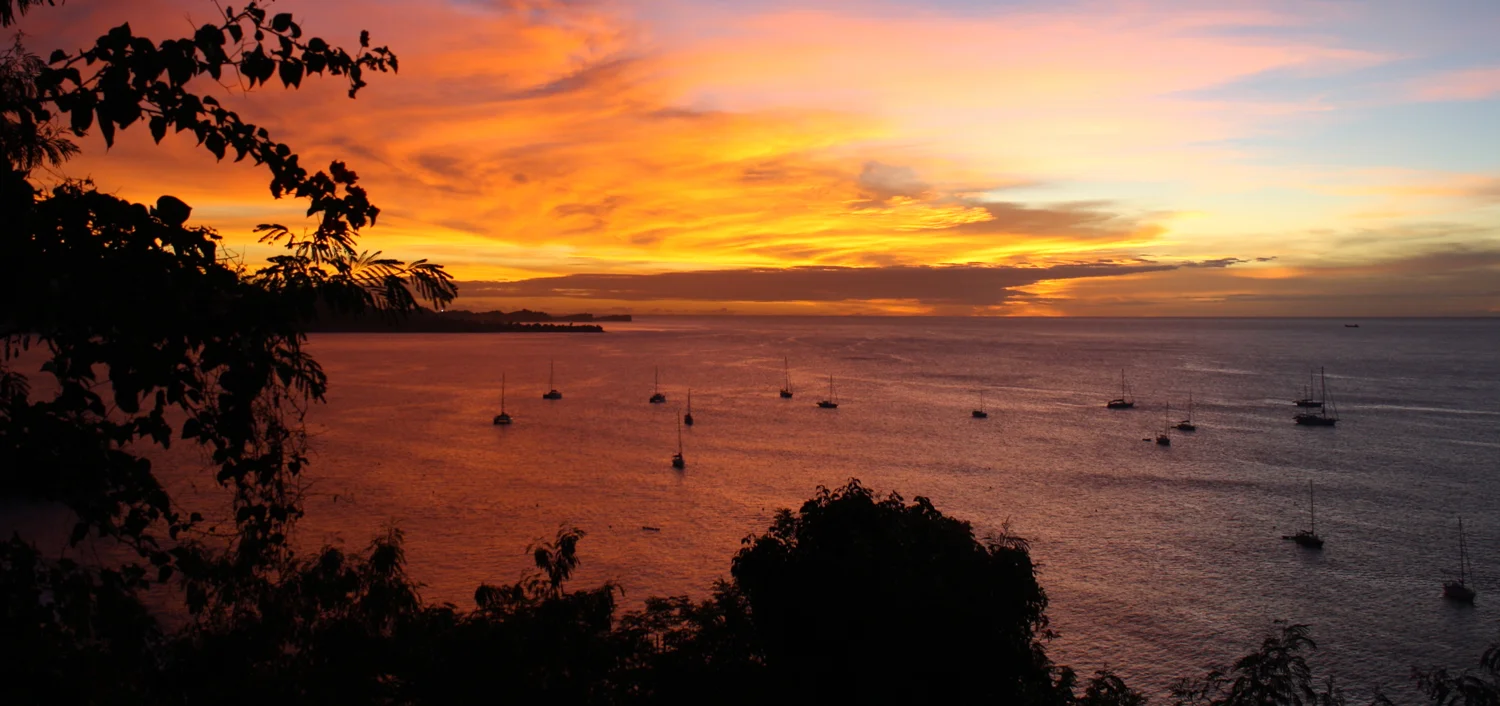
St. LuciaDiamond of
the Caribbean Sea. Volcanic island, rainforest, boiling lake and thermal waterfalls. Constant trade winds, incredible panoramas, picturesque harbours, inland explorations, friendly joints and Caribbean cuisine that will leave you spellbound. St. Lucia, with an area of 616 km², has a population of 174 ts. The head of this island is Elizabeth II. The main export is bananas, which suggests that agriculture is the second most important livelihood after tourism.
Experience the trade winds between the islands and the ocean waves, or enjoy the tranquillity of the leeward coast.palm-fringed beaches, picturesque bars and easy but exciting snorkelling. An ideal place to sail to nearby islands such as St. Vincent, Tobago Cays, Mustique and many more.
St. Lucia is home to a variety of flora and fauna. Here you may come across one of the 50 specimens of the multi-coloured Amazon, which has become a nearly extinct species due to the hurricanes that raged here in the 1970s. Despite the fact that this parrot has been bred in captivity in some cases, its value is incalculable. Because this species of amazon is found only on the island of St. Lucia, it has become its national symbol.
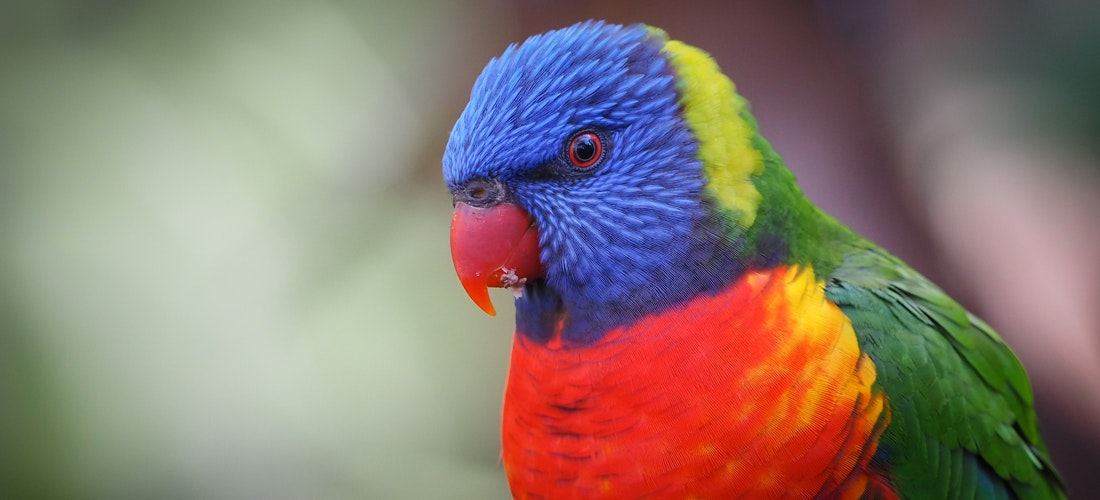
There's something for nature lovers too. In 2004, the following two peaks were inscribed on the UNESCO World Heritage List - namely Gros and Petit Pitons. They were formed 40,000 years ago and now largely form a protected landscape area.
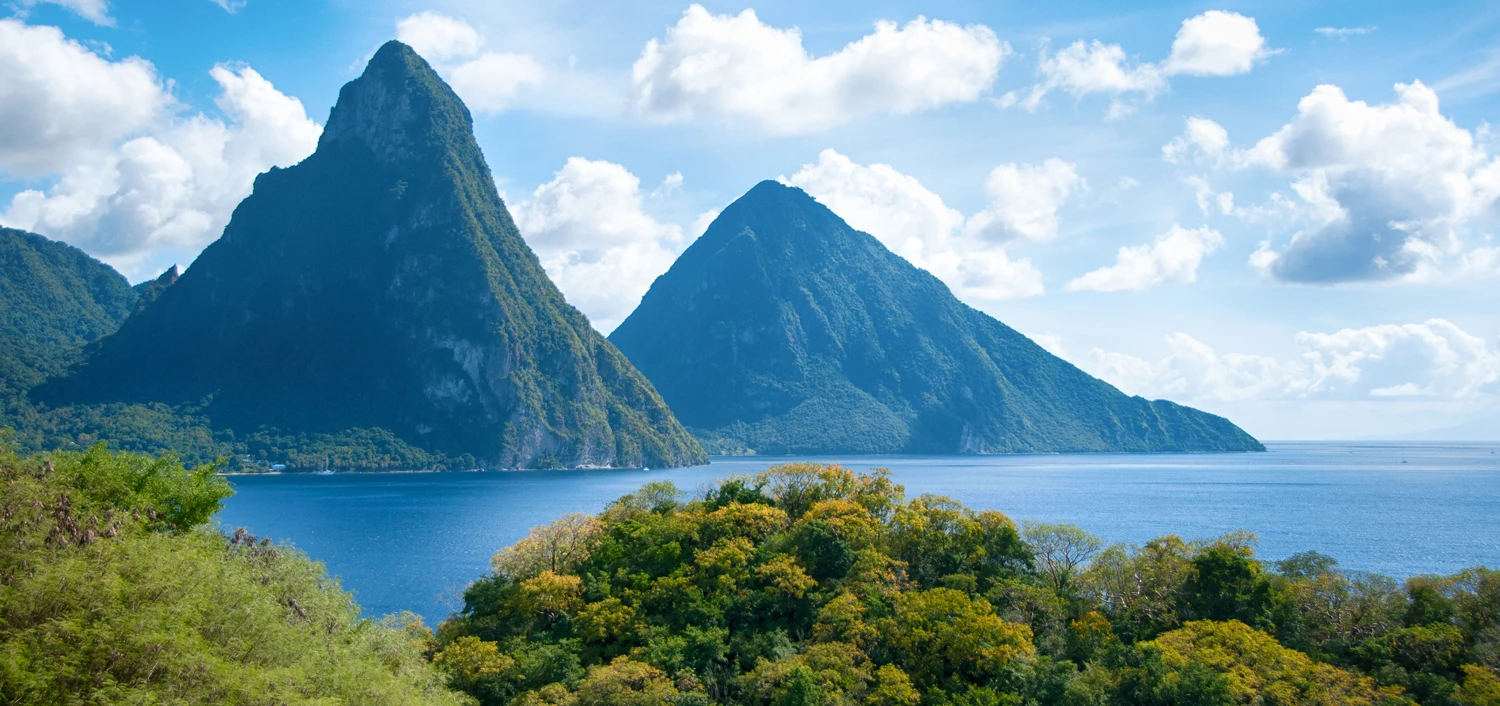
MartiniqueFrench
culture in the Caribbean Sea combined with white-sand beaches and coral reefs, Caribbean rum in its cradle. Yachting in trade winds between tropical paradises. French civilisation blends with true Caribbean culture. In Martinique, you'll experience a concentrated Caribbean without leaving it. If you leave it, St. Lucia and Genadina await you in the south and Dominica in the north. Tropical islands straight out of Pirates of the Caribbean. Don't fight it and set sail.

AntiguaAntigua
offers the perfect place to experience a combination of Caribbean parties, challenging sailing trips
, and the best of the Caribbean.fun, wildlife and white sandy beaches (exactly 365 beaches on the island provide one beach for every day of the year). Warm seas and steady winds make Antigua an ideal yachting location.
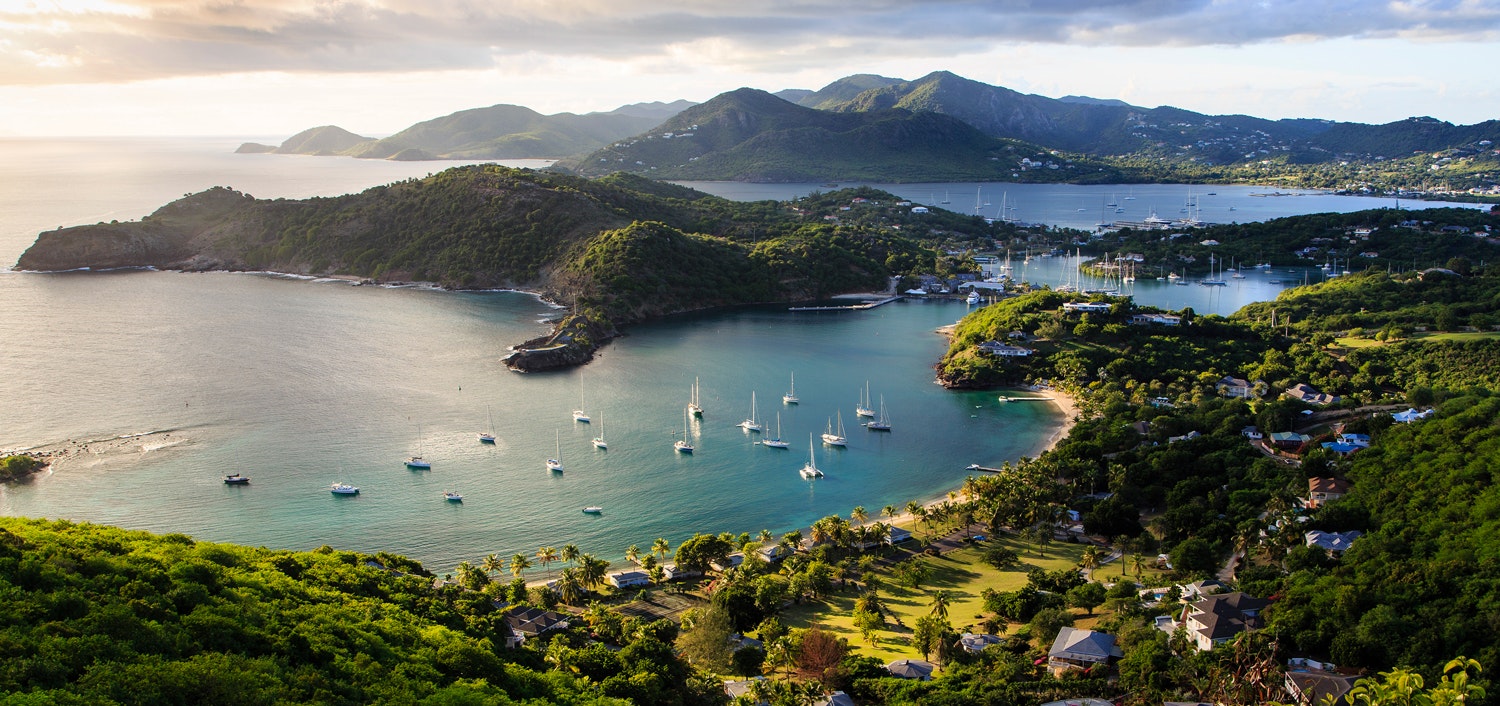
St.
TheSpanish-French
influence combines with Caribbean culture and the island's reputation as a place to experience a good steamries, makes this island the perfect place to enjoy excellent Caribbean cuisine combined with live music and entertainment you won't forget. Trade winds in the open passages offer exciting sailing for even the most experienced sailors.
British Virgin Islands (BVI)
One of the most beautiful sailing locations in the world. Unique for the Caribbean Sea, it provides sailing in a huge enclosed coral lagoon. There are trade winds and, thanks to the coral reef, small waves offering easy sailing between islands only a few miles away. This popular sailing location is so rugged that it can provide privacy for a large number of sailboats.
CubaCommunism
in the Caribbean has its own inimitable form. Only those who have lived in this tropical paradise can understand the socialism of Cuba. A very specific destination with pristine seas, plenty of fish and a lack of restaurants. Cuba is simply fantastic untouched nature that cannot be found elsewhere. Take a look at our range of boat charters in Cuba
.
Bahamas and AbacosCruise
from one beach with desert dunes to another in crystal clear water. Easy sailing suitable for beginners with plenty of good anchorages. Ideal for a relaxing and relaxing boat holiday. Beautiful snorkeling at shallow depths with abundant underwater life.
BelizeFew people
know that the coral reef that fringes Belize is the second largest coral reef in the world after the Great Barrier Reef. Belize is an undiscovered yachting paradise. Pristine and pristine best defines this part of Central America. Plenty of low palm islands and bars where you can order crawfish for the price of lamb in Croatia. Ancient Indian civilizations left monumental architectural traces hidden in the surrounding rainforest. In short, exciting untouchedness.
Weather and climate
The Caribbean lies in the NE trade winds, which bring relatively stable weather, except during the tropical storm season. During the winter months, visibility is mostly very good. During the summer and autumn months, temperature and humidity rise and cloud cover increases, with heavy rain showers and thunderstorms very common. The tropical season in the Caribbean is generally from June to mid-November, but exceptionally tropical cyclones may occur in May and December. The greatest risk of tropical cyclones occurring is in August, September and October. On average, there are 12 tropical storms (with winds of 8 BF or more) during this period, and half of these reach hurricane strength. Visibility is often reduced due to frequent rain showers and sometimes fog haze.
The Antilles Current flows NW on the Atlantic side of the Lesser Antilles and joins the Gulf Stream north of the Bahamas. The strength of the current is between 0.5 and 1.2 kn.
best time to cruiseThe best
time to cruise is from February to May, when the peak season in the Caribbean is. November, December, January and early June are also good times to cruise. From mid-June to the end of October is the hurricane season. This is also sailing time in the Caribbean, but it is very warm and rains more often. And, of course, it's important to keep an eye on the weather forecast so that a potential hurricane doesn't catch you off guard and turn a relaxing cruise into a completely unbeatable, adrenaline-fueled disaster of a vacation.
WindsFrom
December to May, the wind blows steadily from the northeast and this is the best time for sailing in the Caribbean. The wind can be very strong between the islands at 5-6 BF and therefore it is not sailing for beginners. During the winter, high pressure systems are often found in the northeast Leeward Islands. If they strengthen, they can produce sharp easterly winds (locally known as "Christmas Winds") of 5-6 BF (20-25kn) sometimes 6-7 BF (25-30kn). In summer and autumn, the winds turn to the east, become unstable, weaken to an average of 3 BF (7 - 10kn) or less, and may blow from different directions. There is a high probability of tropical storms and hurricanes.
What is the best ship for a cruise in the Caribbean?
Definitely a catamaran. In the Caribbean, the weather is always warm and life takes place most of the time on the top deck. And a catamaran has just about everything on the top deck except cabins and toilets. On deck you have a saloon with a galley connected by a large door, and a large cockpit. There's plenty of room for sunbathing, including a comfortable net for lying between the floats. Quite simply, a catamaran is the best for a relaxing cruise in the tropics.
Anchoring
In the Caribbean, the wind blows from the same direction most of the time. Boats are equipped with good anchors and anchor frequently. You either stand at anchor off the beaches or stand bow to anchor and tie a long rope ashore from the stern. In populated areas, a local native will help you tie the rope ashore for a few Caribbean dollars. You have to accept help, it's part of the local specialty. If you refuse, you risk the hostility of the locals.
What to watch out forSailing
in the Caribbean Sea is only allowed during the day. Anyone who has ever experienced the pitch black darkness that occurs here when the moon is not shining understands this very well. There aren't many navigation lights in the Caribbean, and on the contrary, there are plenty of rocks and reefs that are at best marked by wooden stakes, invisible at night.
If you are going to sail in the coral reef area, always sail when the sun is high and "read the water". Have a person on the bow looking into the water and making sure it is deep enough. In the coral reef area, don't trust charts, paper or electronic.
Customs formalitiesIndividual
islands in the Caribbean are usually separate countries, meaning you have to constantly deal with checking in when sailing between them. And you really do have to check in, or risk hefty fines and unpleasant situations.
Gastronomy in the Caribbean
The islands you visit in the Caribbean are mostly influenced by American or French cuisine.
On Guadeloupe and the surrounding islands you can also taste Creole specialties such as Sauce créole
which is a sweet and sour sauce, Boudins - small dark mornings, Accras - fried cod croquettes, Boukit - something like Czech langos, but cut open with filling inside, Agoulou - a sandwich from a stall, mostly ham, cheese, meat and egg.Another local speciality is cooking bananas, which are a bit bigger than regular bananas. These are fried and added to the main dish and are called plantain
in French.In the Caribbean, everyone should take the opportunity to taste exotic fruits. How about trying a guava or a maracuja
? We all know the mango, but in the Caribbean it's much tastier. Starfruit is a fruit species virtually unknown here - it's shaped like a starfish and the locals make a delicious marmalade from it.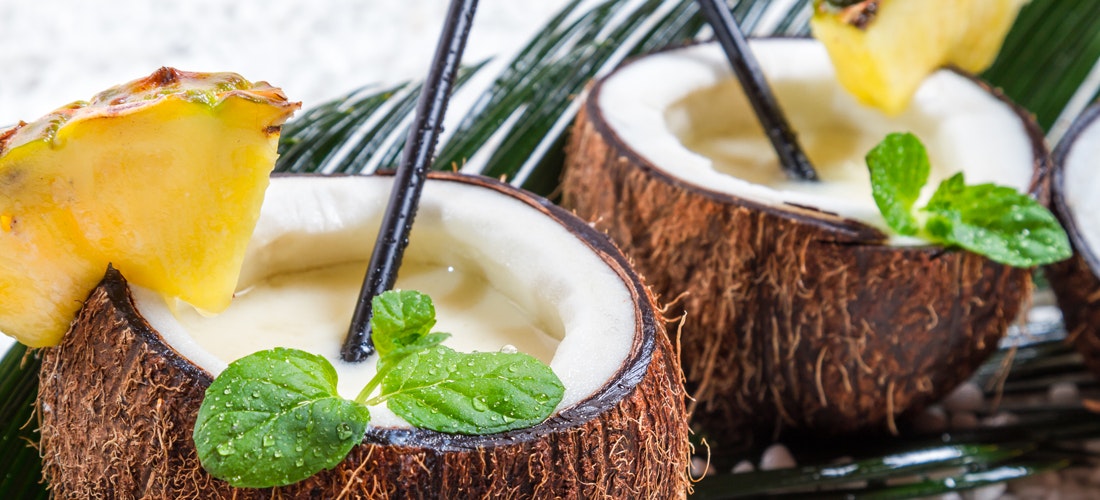
White rum is also inseparable from the Caribbean, the most famous being the rum from Martinique. White rum here has between 40% and 60% alcohol content and is therefore most often served in the form of drinks such as Piña Colada
, Cuba Libre and the very popular aperitif Ti'Punch, which is white rum with lime and cane sugar. The ingredients are basically similar to the Brazilian caipirinha, but the way it is served is different.Don't forget to try the Planteur, a liqueur made with white rum and the juice of several exotic fruits.
FishingThere
are still plenty of fish in the Caribbean and a good fisherman will catch enough fish for the whole crew. They catch predatory fish by trolling bait behind the boat (tuna, golden dorado,...). The spearfishermen fish beautifully especially on the edges of the islands, where the current from the sea brings a lot of nutrients and there is an abundance of fish. Watch out for strong currents!
Contact yachting°com today about your next sailing holiday in the Caribbean or browse available yachts below.
Ask me about sailing in the Caribbean.
Write us and we will contact you:
International Numbers:
UK: +44 208 08 98 515
DE: +49 211 54 69 22 23
CZ: +420 222 528 222
RU: +7 499 609 4515
SK: +421 232 195 340
